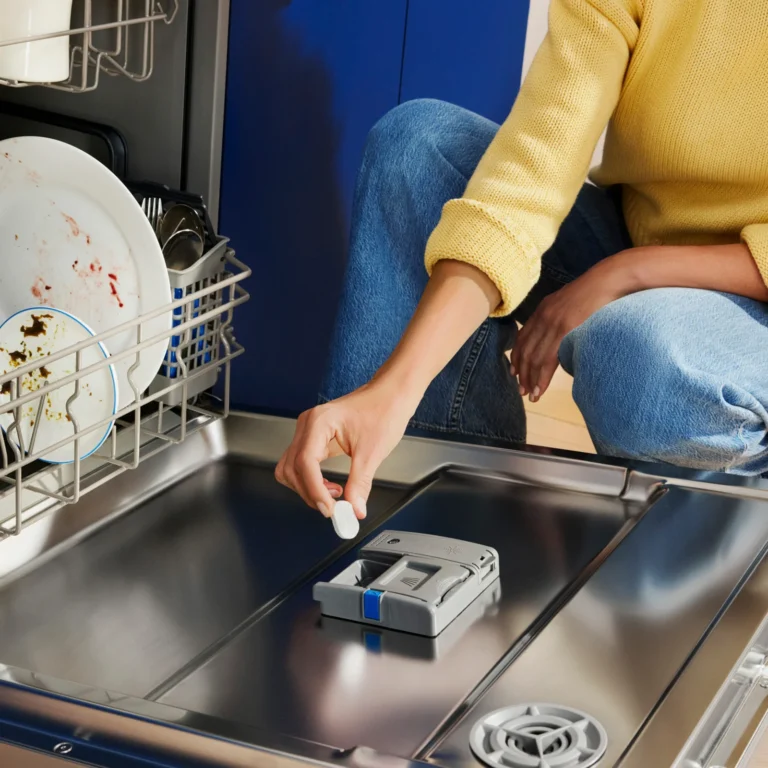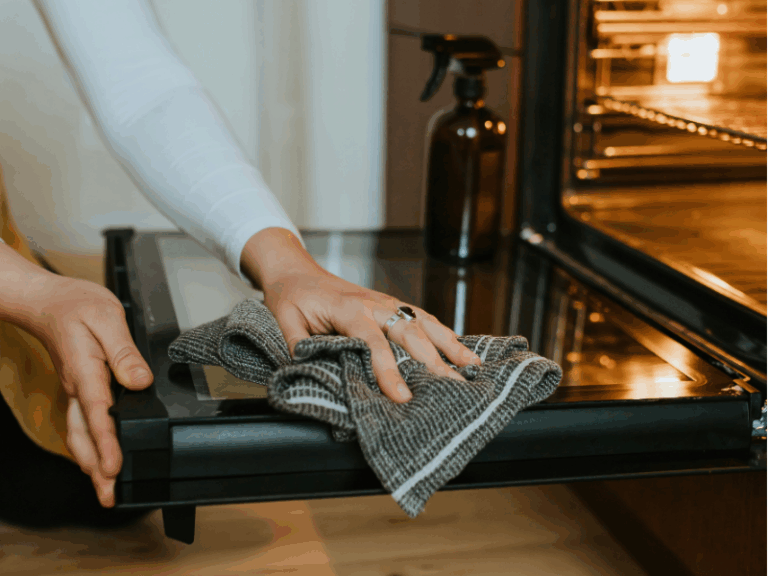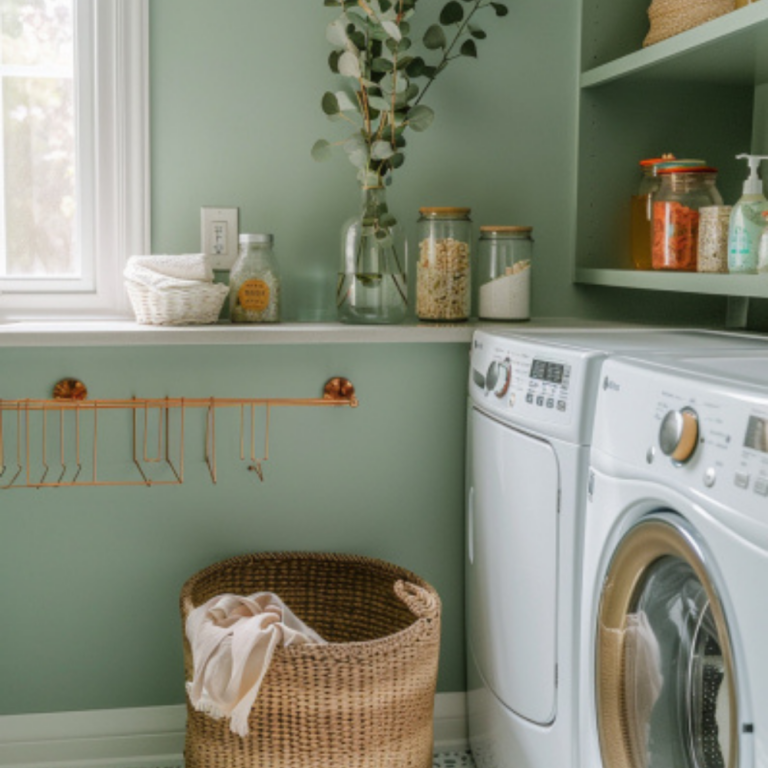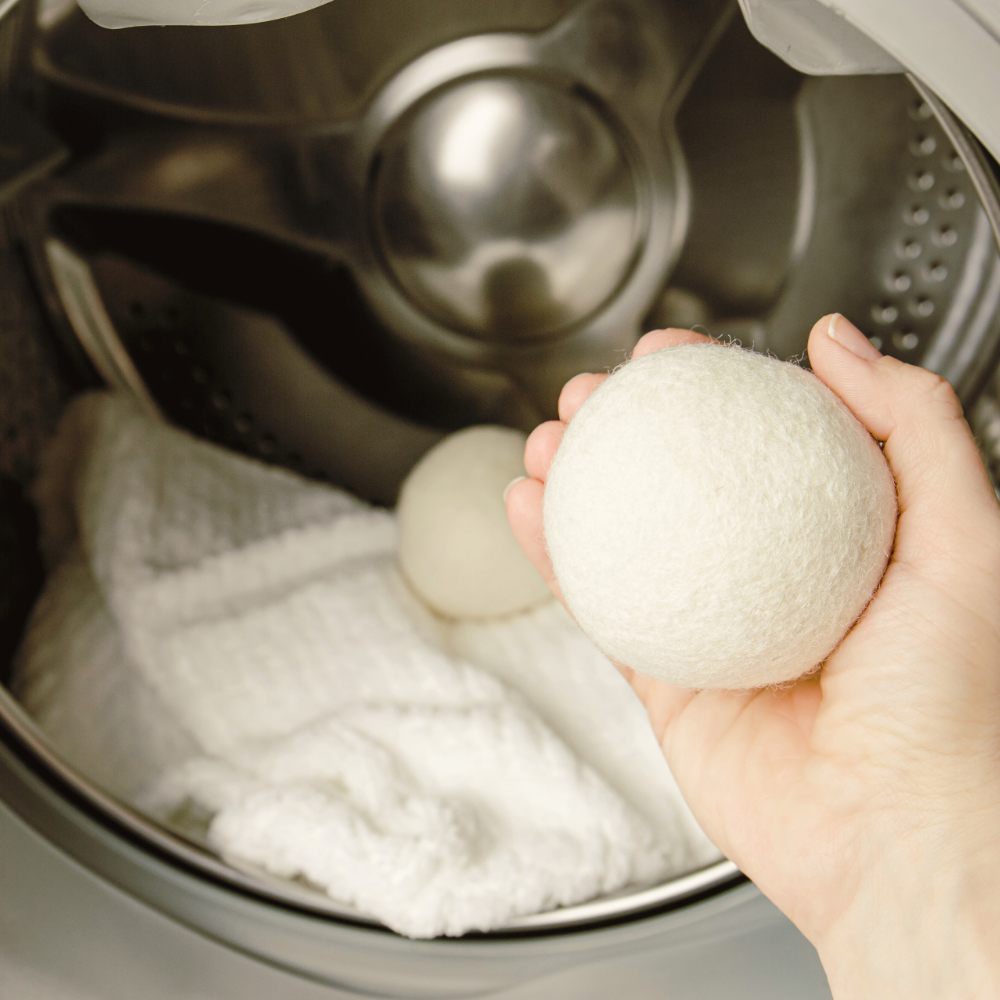
Key Takeaways
- Wool dryer balls are a reusable, plastic-free alternative to dryer sheets that reduce static, soften fabrics, and cut drying time by up to 40%.
- Dryer sheets shed microplastics and release synthetic chemicals into your home and the environment with every load.
- Switching to dryer balls helps lower waste, energy use, and exposure to harmful VOCs—making it the cleaner, safer choice for your laundry and the planet.
It might seem harmless to toss in a load of laundry, hit start, and walk away. But hiding inside that spin cycle is a quiet source of pollution most of us never think about: microfibers.
Every time we wash and dry synthetic fabrics like polyester or nylon, millions of microscopic fibers break off. And those polyester-based dryer sheets? They make things worse by shedding plastic fibers and coating clothes with synthetic chemicals that linger long after drying.
Research published in Air Quality, Atmosphere & Health found that scented dryer sheets can emit more than 25 volatile organic compounds (VOCs) — including known irritants and carcinogens like acetaldehyde and benzene. It’s an invisible cocktail that circulates through your home every laundry day.
The better choice? Wool dryer balls. These simple, reusable spheres naturally soften clothes, cut drying time, and eliminate the need for single-use sheets that release microplastics and VOCs. Switching from dryer sheets to dryer balls isn’t just an eco-friendly laundry hack; it’s a small, powerful way to reduce waste, save energy, and protect the planet right from your laundry room.
What Are Dryer Sheets?
Dryer sheets were created to make laundry feel softer, smell fresher, and stay static-free — all without extra effort. They look simple: thin, fabric-like squares that you toss in the dryer and forget about. But behind that convenience lies a mix of synthetic materials and chemical coatings designed to alter how your clothes feel.
Most dryer sheets are made from polyester or other plastic-based fibers coated with a blend of quaternary ammonium compounds (quats), silicone lubricants, and fragrance chemicals. When the dryer heats up, these coatings melt and transfer onto your clothes, smoothing fibers and leaving behind that familiar “fresh” scent.
While that coating helps reduce static, it’s also what makes dryer sheets a hidden source of pollution and chemical exposure.
- Environmental Impact: Every load releases microplastic particles from the polyester sheet itself and volatile organic compounds (VOCs) from its chemical coatings. These emissions vent into the air or settle on your clothes, contributing to both indoor air pollution and outdoor particulate waste. And because dryer sheets are single-use, millions of them end up in landfills each year, where their synthetic fibers can take decades to break down.
- Health Concerns: Research from the University of Washington found that scented dryer sheets emit hazardous chemicals, such as acetaldehyde and benzene, through dryer vents — pollutants linked to respiratory irritation, headaches, and long-term health risks. These compounds can cling to fabrics, leaving chemical residues that increase exposure with each wear.
💡NOw you know
What Are Quaternary Ammonium Compounds?
Quaternary ammonium compounds, or quats, are synthetic chemicals used in dryer sheets to make fabrics feel softer and reduce static. But they don’t break down easily in the environment and can be toxic to aquatic life. Some studies have linked long-term quat exposure to skin irritation, asthma symptoms, and even fertility issues in lab tests.
What Are Dryer Balls?
Dryer balls are a simple, natural alternative to dryer sheets — designed to soften fabrics, reduce wrinkles, and shorten drying time without chemicals or synthetic coatings. As they tumble through the dryer, they gently separate clothing and boost airflow, allowing heat to circulate more evenly. The result? Softer clothes, less static, and faster drying cycles that save both energy and money.
While dryer balls come in several materials, wool dryer balls are the most effective and sustainable choice. They’re made from tightly wound layers of 100% natural wool with no dyes, plastics, or synthetic fibers. Wool is naturally absorbent, helping draw moisture from fabrics to speed up drying, while its soft texture helps reduce friction that can cause wear or pilling over time.
- Performance Benefits: Wool dryer balls can cut drying time by 20–40%, depending on load size, while reducing static and softening fabrics naturally. Because they don’t rely on chemical coatings, there’s no buildup on clothes and no synthetic residue in the dryer.
- Longevity and Cost Savings: A single set of wool dryer balls lasts through roughly 1,000 loads, replacing hundreds of single-use dryer sheets. Over time, that means less waste, fewer purchases, and lower household energy costs.
- Sustainability Edge: Unlike rubber or plastic dryer balls, which can release microplastics when heated, wool dryer balls are fully biodegradable and compostable at the end of their life. Once they start to lose shape, they can be cut up and added to your compost or repurposed around the home.
Environmental Impact: Microplastics and Waste
When it comes to sustainability, dryer sheets and dryer balls couldn’t be more different.
❌ Dryer Sheets: Hidden Microplastics in Every Load
Most dryer sheets are made from polyester or other synthetic fibers and are coated with fabric softeners that melt under heat. Each load releases tiny microplastic fibers into the air and onto your clothes — pollution you can’t see but that lingers long after drying.
Over time, those fibers wash out in the next cycle or vent into the environment, contributing to widespread plastic pollution. The International Union for Conservation of Nature (IUCN) estimates that synthetic textiles are responsible for roughly 35% of microplastics in the ocean. When you consider that the average household does hundreds of loads per year, the cumulative effect adds up fast.
Beyond microplastics, dryer sheets are single-use products, meaning every load generates waste. Since most are made from plastic-based materials, they can take decades to decompose in landfills, all while leaching chemical residues such as quaternary ammonium compounds and synthetic fragrances.
✅ Dryer Balls: Reusable, Biodegradable, and Plastic-Free
Wool dryer balls offer a completely different approach. Made from 100% natural fibers, they soften fabrics and reduce static without any coatings, plastics, or synthetic fragrances. Because they don’t shed microplastics or release VOCs, they’re a zero-waste, low-tox alternative for your laundry routine.
A single set of wool dryer balls can last up to 1,000 loads, replacing hundreds of disposable dryer sheets and significantly reducing household waste. When they finally wear out, they’re fully biodegradable and compostable — meaning they return safely to the earth instead of lingering in landfills.
Don’t Miss: Microplastics — Health Risks, Sources, and How to Reduce Exposure Microplastics are everywhere — from the clothes we wash to the food we eat. Find out where they come from and how to limit your exposure. Read more →Dryer Balls vs. Dryer Sheets: Environmental Comparison
When you look at dryer balls vs. dryer sheets, the difference is bigger than it seems. One is meant to be tossed after a single use, while the other can last for years. Take a look at how these two laundry helpers stack up and how a simple swap can make your routine cleaner and greener.
| Feature | Dryer Sheets | Wool Dryer Balls |
|---|---|---|
| Material | Synthetic polyester fibers | 100% natural wool |
| Microplastic Pollution | Yes — shed plastic fibers during drying | No — made from natural fibers |
| Chemical Emissions | Release VOCs (acetaldehyde, benzene) | None — no synthetic coatings or fragrances |
| Reusability | Single-use (one per load) | Reusable for ~1,000 loads |
| Decomposition | Takes decades to break down in landfills | Fully biodegradable and compostable |
| Impact on Air Quality | Releases synthetic fragrances and VOCs | Improves indoor air quality (no chemicals) |
Performance Comparison: Dryer Balls vs. Dryer Sheets
Now that we’ve looked at the environmental side, let’s see how dryer balls and dryer sheets compare when it comes to performance. Both promise softer, fresher laundry — but how they work (and what they leave behind) makes all the difference.
👚 Softening Power
Dryer sheets coat your clothes with synthetic softeners that make fabrics feel smooth. The downside? Those coatings can build up over time, leaving clothes less absorbent and more prone to trapping odors.
Wool dryer balls, on the other hand, soften clothes naturally. As they tumble, they gently fluff fabric fibers without chemicals or residue. The result feels just as soft — and it’s better for your skin and the planet.
⚡ Static Reduction
Dryer sheets fight static by coating fabrics with chemicals that reduce friction. They work, but the same coatings that fight static also transfer synthetic residues onto your clothes.
Wool dryer balls reduce static by keeping clothes separated and boosting airflow. For extra help on dry winter days, you can add a slightly damp washcloth or a pinch of moisture to your load to neutralize static naturally.
🔋 Drying Time & Energy Efficiency
Wool dryer balls help air move more freely through your laundry, cutting drying time by up to 20–40% depending on the load. Less time in the dryer means lower energy bills and a smaller carbon footprint.
Dryer sheets don’t speed up drying — they only change texture and scent — so energy use stays the same.
🌸 Scent Options
Dryer sheets are loaded with synthetic fragrances that can linger long after drying. For some people, that “fresh” scent can actually cause headaches, allergies, or skin irritation.
Wool dryer balls are fragrance-free by default, but you can easily add a few drops of essential oil to them for a light, natural scent. Lavender, citrus, or eucalyptus are great options for clean, uplifting freshness.
💰 Reusability & Cost Over Time
Dryer sheets are single-use, meaning you throw one away with every load and keep buying more. That cost adds up quickly.
Wool dryer balls are reusable for about 1,000 loads, saving money and waste in the long run. You buy them once, use them for years, and they still end up compostable instead of in the trash.
Health and Safety Considerations
When it comes to health and indoor air quality, dryer balls and dryer sheets are very different stories. Dryer sheets can leave behind invisible chemical residues, while wool dryer balls keep things clean and simple.
Dryer Sheets
Dryer sheets might smell fresh, but that scent often comes from a mix of synthetic chemicals, many of which aren’t listed on the label. These coatings melt at high temperatures and transfer to your clothes, where they can cling to fabric and come into contact with your skin all day.
Common chemicals in dryer sheets include:
- Benzyl acetate — linked to respiratory irritation.
- Benzyl alcohol — can irritate skin and eyes.
- Chloroform — a suspected carcinogen.
- Dichlorobenzene — associated with liver and kidney damage.
- Methylisothiazolinone — a preservative known to cause allergic reactions.
Research from the University of Washington also found that scented dryer sheets emit VOCs such as acetaldehyde and benzene through dryer vents, both of which are linked to asthma, headaches, and other health issues.
Wool Dryer Balls
Wool dryer balls skip the chemicals altogether. They’re made from 100% natural fibers with no coatings, dyes, or artificial scents. That means no VOCs, no residue, and no buildup on your clothes or in your dryer.
They’re beneficial for people with:
- Sensitive skin or eczema.
- Allergies to fragrance or dyes.
- Asthma or respiratory sensitivities.
If you like a light scent, you can safely add a few drops of essential oils (like lavender, lemon, or peppermint) to your wool balls for a natural alternative that won’t irritate your skin or lungs.
The Best Wool Dryer Balls Worth Trying
If you’re ready to ditch dryer sheets for good, there’s no shortage of great wool dryer balls to choose from, but not all are made the same. Some focus on fair-trade production, others on zero-waste packaging, and a few manage to do both beautifully.
Below are a few brands I’ve personally researched and love for their quality, ethical sourcing, and commitment to reducing plastic waste.
Fluff Ewes
$26-48

Okay, let’s talk about a brand that’s doing so much good behind the scenes. Hustle & Blush describes itself as “modernizing ancient goods through ethical artisan partners,” and that mission shows in everything they make.
Founded by Lisa Weaver, a designer and social entrepreneur based in Los Angeles, the company focuses on creating modern, ethically made home goods that celebrate traditional craftsmanship.
Lisa works directly with artisan communities around the world to ensure that every piece supports fair trade wages, safe working conditions, and sustainable materials.
Their home goods collection, including the Fluff Ewes Wool Dryer Balls, is created in collaboration with female artisans in Nepal who hand-felt each set with care. These dryer balls are made from 100% premium New Zealand wool so that you can skip synthetic softeners and single-use dryer sheets altogether.
Friendsheep
$21-42
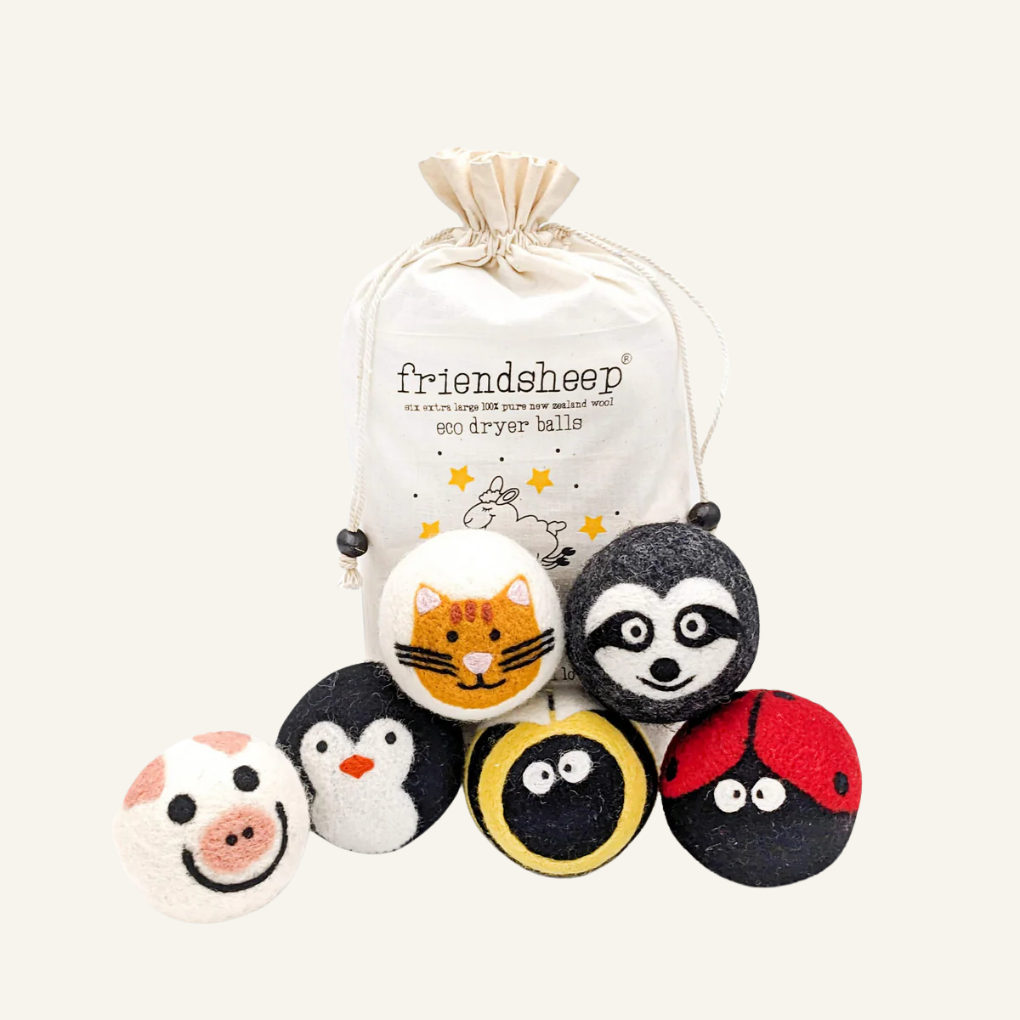
This next brand has a fun, clever name, Friendsheep, that perfectly fits a company focused on making sustainable living feel joyful and approachable.
Friendsheep was founded by Valeria Isaacs, a zero-waste entrepreneur, disability advocate, mother, and former biologist who set out to create home products that are kind to people, animals, and the planet.
The company combines sustainability and craftsmanship, offering Eco Dryer Balls handmade from 100% premium New Zealand wool — no dyes, fillers, or synthetics — under fair-trade working conditions in Nepal.
The brand partners with women artisans in underserved communities, providing fair wages and stable employment. It also plants one tree for every item sold, helping to restore forests worldwide.
No mulesing, chemicals, hormones, or pesticides are ever used in their wool. Friendsheep is committed to a plastic-free approach in all packaging and shipping. When external packaging is needed, they use organic unbleached cotton muslin bags or 100% tree-free Lokta paper bags.
Smart Sheep
$10-20
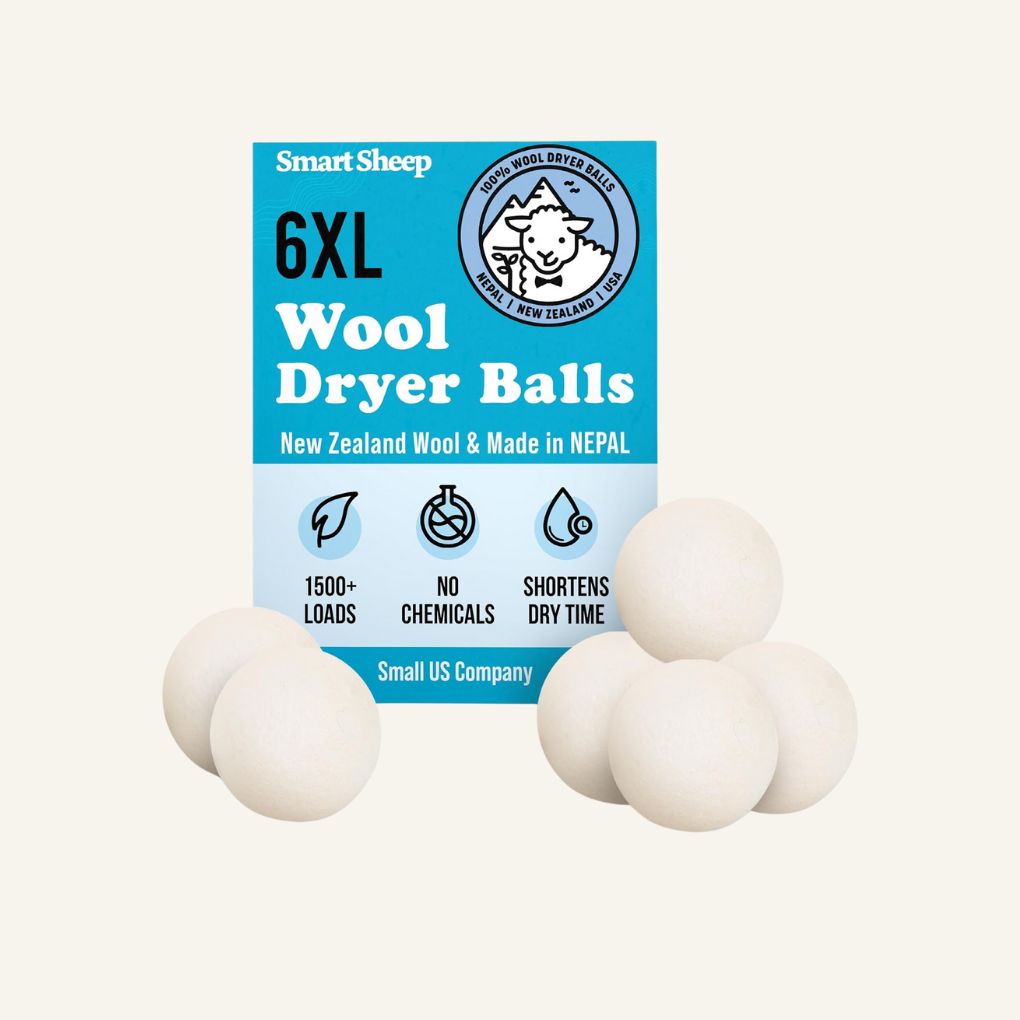
Smart Sheep produces wool dryer balls made from 100% premium New Zealand wool, without dyes, fillers, or synthetic coatings.
The company was founded by Christine Krogue, a mother of five based in Utah, who started the business from home.
The dryer balls are handmade in Nepal, providing fair wages and employment for over 250 women and minorities. Once produced, they are inspected and packaged by moms in Utah who work flexible hours.
Molly Suds
$16
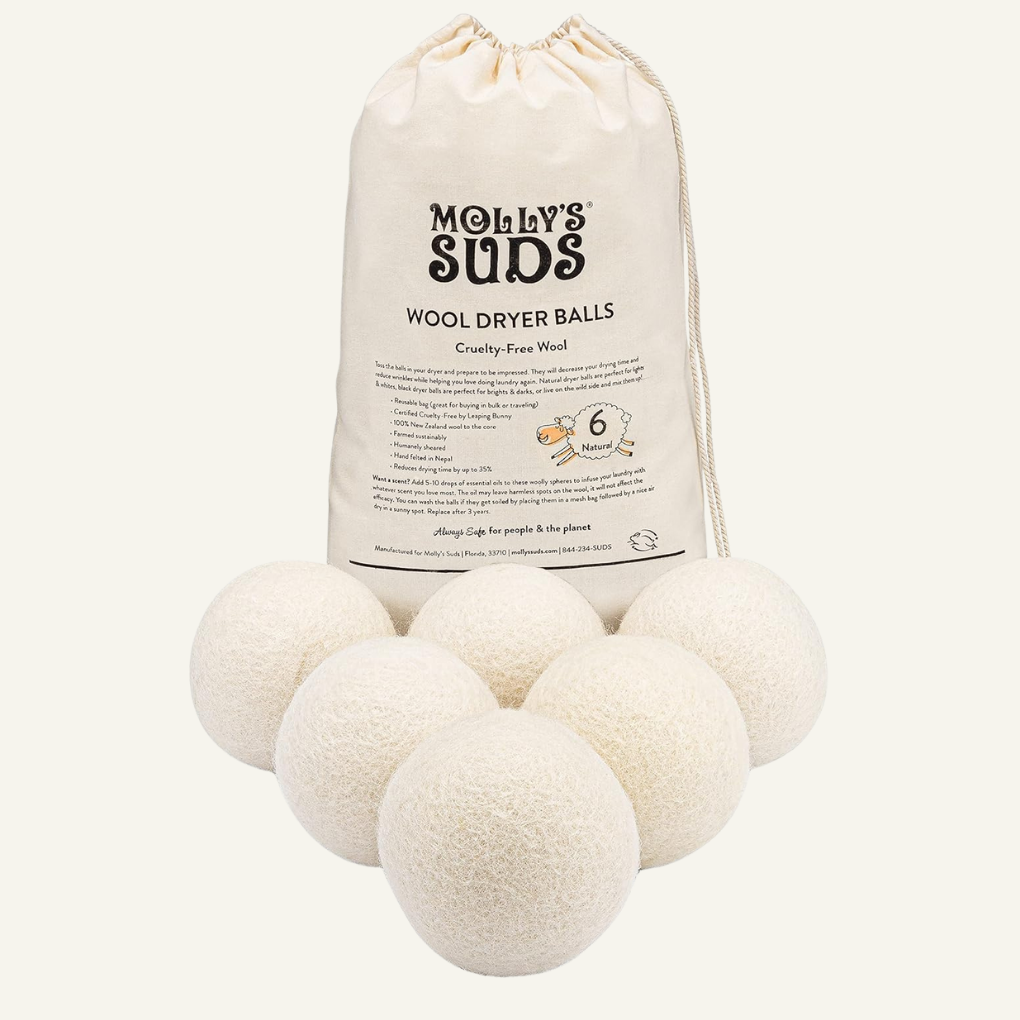
Molly’s Suds takes the guesswork out of clean, non-toxic laundry, and their Wool Dryer Balls are a perfect example of that “safe made simple” philosophy.
Made from 100% pure New Zealand wool, these dryer balls naturally soften fabrics, reduce static, and help shorten drying time, all without synthetic coatings or fragrances.
The brand was founded by Monica Leonard, a mom and former pediatric nurse who created Molly’s Suds in honor of her daughter, Molly, and her mission has always been crystal clear: to make laundry and household cleaning products that are safe for people, pets, and the planet.
Nellie’s
$11-33

Nellie’s adds a little fun to laundry day with their dryer balls—simple, round, wool dryer balls made from 100% pure New Zealand wool.
There’s even a sweet story behind them: founder James Roberts may not have grown up with sheep, but the idea was inspired by his daughter’s beloved stuffed animal, Lamby. That childhood favorite became the face of Nellie’s natural wool products.
Like everything in the Nellie’s Clean line, their dryer balls are non-toxic, fragrance-free, and eco-friendly.
Dirty Labs
$18-20
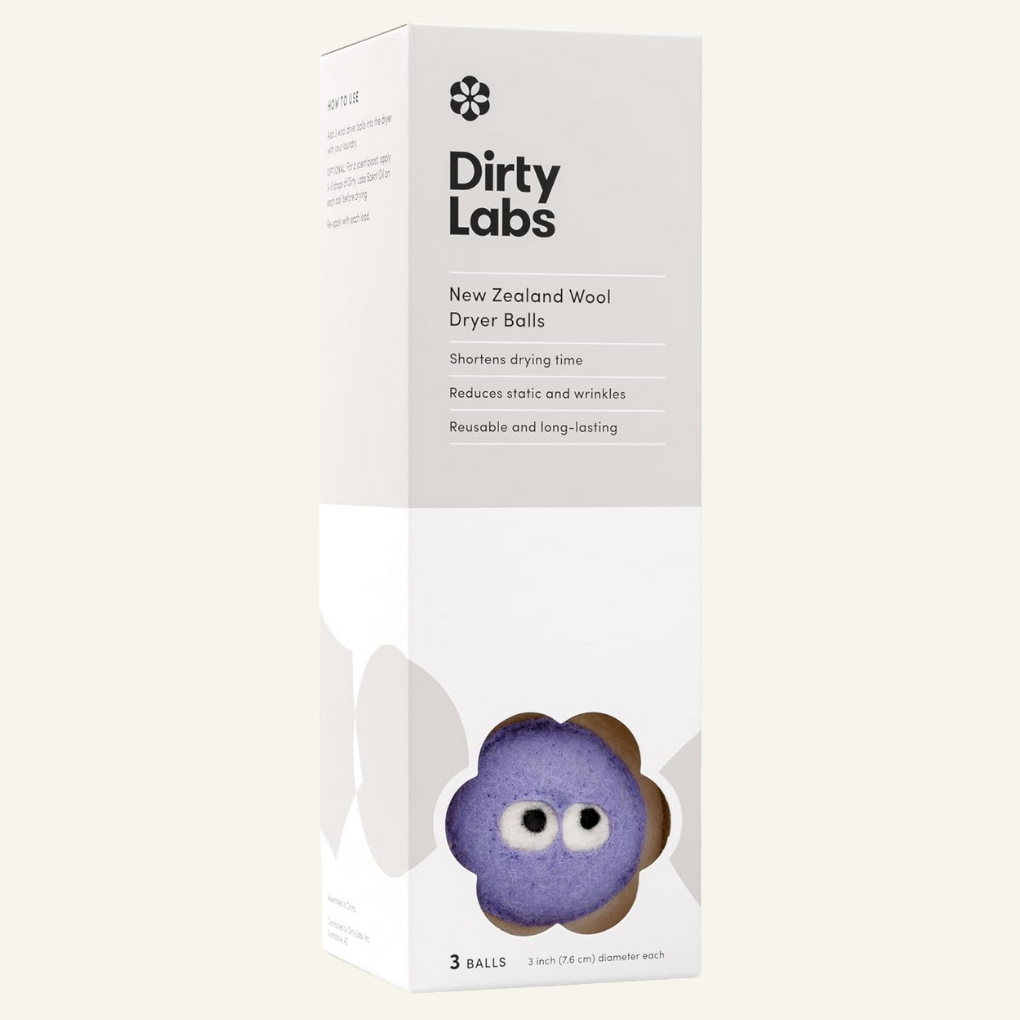
Dirty Labs is known for redefining what “clean” really means: no harsh chemicals, no greenwashing, science-backed formulas, and sustainable design.
Their Wool Dryer Balls carry that same philosophy into the dryer, offering a natural way to soften clothes and cut drying time without synthetic fragrances or plastic coatings.
Made from responsibly sourced New Zealand wool, these dryer balls are gentle on fabrics and safe for sensitive skin. Even the packaging stays true to their eco values — recyclable, minimal, and plastic-free.
Grove Collaborative
$20
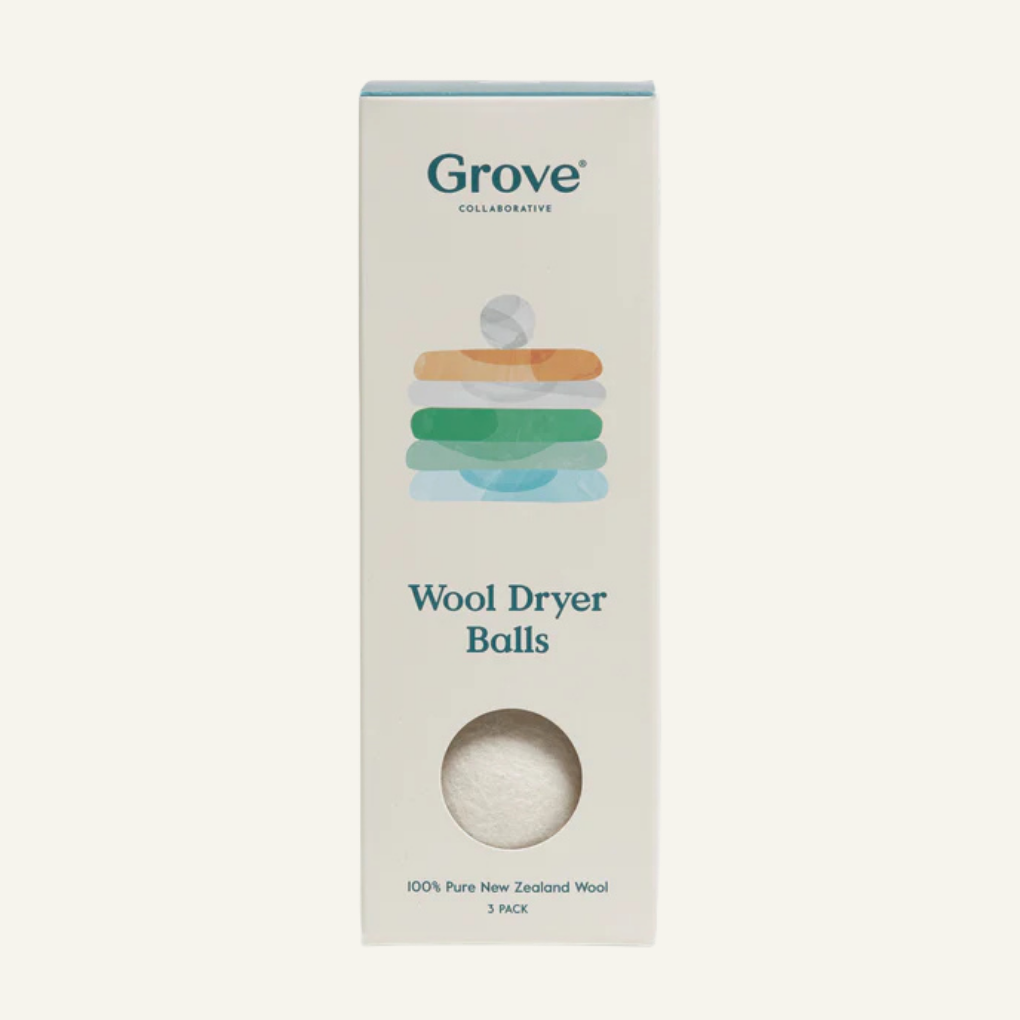
I shop at Grove Collaborative because it makes it easy to find plastic-free products. Their Wool Dryer Balls, made from 100% New Zealand wool, are part of Grove’s commitment to creating simple, low-waste household essentials.
The company is both a Certified B Corporation and a Public Benefit Corporation, with a bold goal to become 100% plastic-free across all packaging and products.
Grove is also the world’s first plastic-neutral retailer, recovering the same amount of ocean-bound plastic that it uses through a verified partnership with rePurpose Global.
Earth Hero ZWS
$6-31
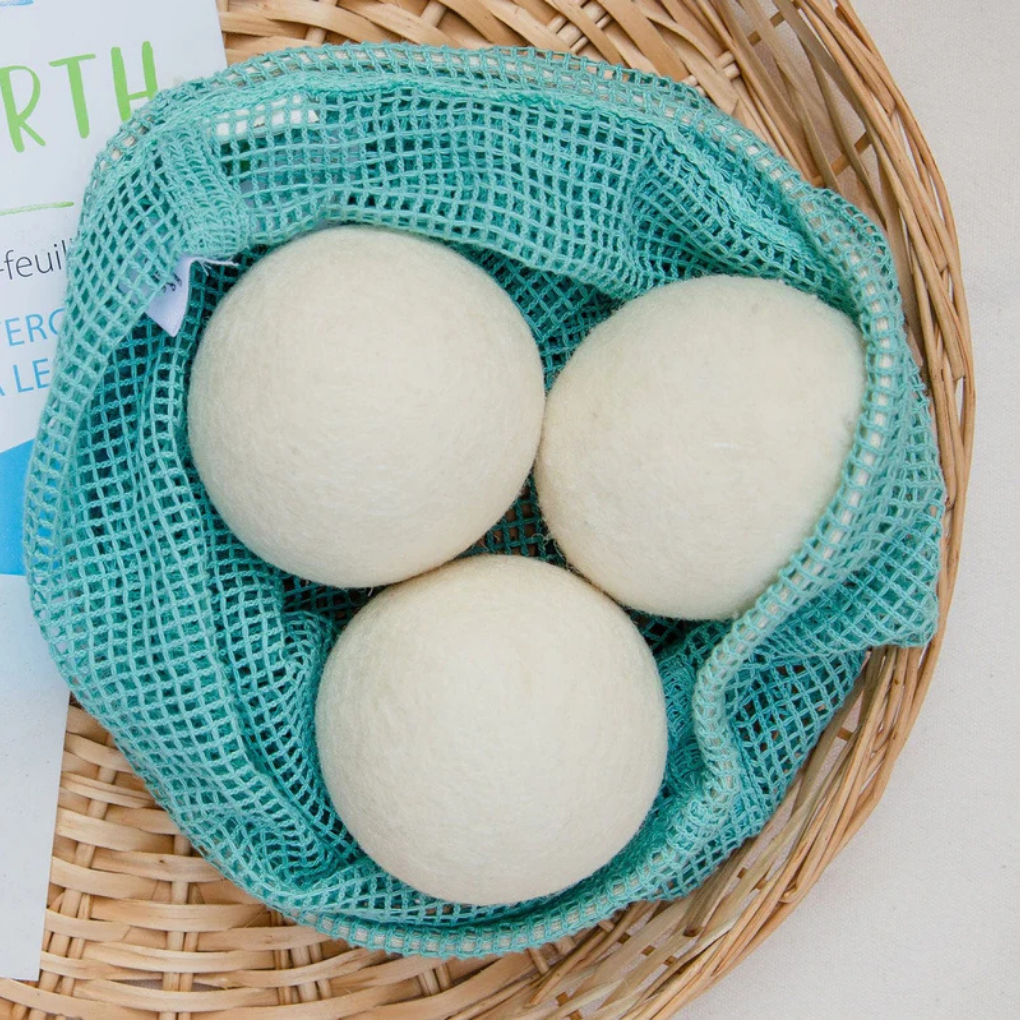
EarthHero isn’t just another store — it’s a certified B Corp marketplace built around sustainable living. Their Wool Dryer Balls are made from 100% organic New Zealand wool, offering an easy, waste-free way to keep laundry soft and fresh without the plastic or chemicals.
What sets EarthHero apart is transparency. Every product they carry meets strict sustainability standards, from ethical sourcing to recyclable or compostable packaging.
EarthHero offsets 100% of its shipping emissions through verified carbon-reduction projects, formerly managed by Carbonfund.org and now offered by ClimeCo.
They’re also a proud member of 1% for the Planet, donating a portion of all sales to environmental nonprofits working on conservation and climate solutions.
✨tips
How to Use Dryer Balls
Using wool dryer balls is simple and low-maintenance. For an average load, place three dryer balls in the drum before starting the cycle. Larger loads, such as towels or bedding, work best with four to six. The balls move through the fabrics as they tumble, improving airflow and helping everything dry more evenly.
Adding Natural Scent
If you prefer a light fragrance, add a few drops of your favorite essential oil to each ball and let them absorb for about 10–15 minutes before tossing them in the dryer. This prevents the oil from transferring directly onto clothes. Lavender, lemon, or eucalyptus oils are popular for their clean, refreshing scents.
Cleaning and Care
Over time, dryer balls can collect lint or pet hair. To clean them, place the balls in a mesh laundry bag and wash on a gentle cycle with warm water. Then, air-dry completely before using again. Occasional cleaning helps them maintain their absorbency and texture.
How to Dispose of Wool Dryer Balls
🌱 Compost Them (Yes, really!)
If your wool dryer balls are 100% natural wool and haven’t been treated with synthetic fragrances or chemicals, they’re compostable. Simply cut them up into smaller pieces (this helps them break down faster) and toss them into your home compost bin. They’ll eventually return to the earth.
🏠 Repurpose Around the House
Old dryer balls still have plenty of life outside the laundry room. You can:
- Use them as natural air fresheners—just add a few drops of essential oil and tuck them into drawers or closets.
- Add them to your pet’s toy stash (if they’re not too chewed up).
- Use them as stuffing for homemade pillows or crafts.
🌷 Use Them in the Garden
Got old wool dryer balls past their prime? Don’t toss them—repurpose them! Cut them up and use the pieces to line the bottom of plant pots. They help improve drainage while still holding onto a bit of moisture, giving your plant roots a happy, balanced environment. Over time, the wool naturally breaks down in the soil and can even add a touch of nitrogen, giving your plants a slow-release nutrient boost. It’s like compost with a side hustle!
♻️ Recycle as a Last Resort
Recycling isn’t the most sustainable path here, but it’s better than sending them straight to the landfill. Regarding sustainability, the goal is always to reduce waste at every step—and even our laundry tools deserve a thoughtful sendoff.
DIY and Natural Alternatives
Want to skip store-bought solutions altogether? There are simple, effective DIY options and natural swaps that can soften your clothes, reduce static, and keep synthetic chemicals out of your laundry routine.
DIY Essential Oil Dryer Sheets
If you’re not quite ready to commit to wool dryer balls, you can make your own reusable dryer sheets with items you already have at home.
You’ll need:
- Small squares of cotton fabric or old T-shirts
- A jar with a lid
- ½ cup vinegar
- 5–10 drops of your favorite essential oil (like lavender, lemon, or eucalyptus)
How to use:
Mix the vinegar and essential oil in the jar, then soak the fabric squares. Wring one out and toss it in with your laundry. These DIY sheets are compostable, fragrance-free (unless you add essential oils), and safe for most sensitive skin types.
Natural Fabric Softener Alternatives
- Vinegar rinse: Add ¼ to ½ cups of white vinegar to your washer’s fabric softener compartment. Vinegar naturally softens fabrics and helps remove detergent residue.
- Baking soda boost: Add 1 tablespoon of baking soda during the wash cycle to soften fabrics and reduce odor.
- Line drying synthetics: Air drying synthetic fabrics instead of tumble drying can reduce static cling and prevent microfiber shedding.
FAQs on Dryer Balls vs. Dryer Sheets
Use 3 dryer balls for small to medium loads, and 5–6 for large or bulky loads, such as towels or bedding. More balls help separate fabrics, improve airflow, and boost drying efficiency.
They help reduce static, especially in natural fibers like cotton and linen. However, they may not eliminate static as effectively as dryer sheets for synthetic fabrics. To boost performance, try adding a safety pin to one ball (to discharge static) or air-drying synthetics.
Yes — they can cut drying time by 10–25% by improving hot air circulation and absorbing moisture. This not only saves energy but also helps extend the life of your clothes by reducing heat exposure.
Final Thoughts on Dryer Balls vs. Dryer Sheets
It’s funny how something as simple as a dryer sheet can have such a significant impact on our air, our clothes, and the environment. Making the switch to wool dryer balls is one of those small, feel-good changes that actually sticks. They last for ages, skip the chemicals, and keep your laundry routine simple.
What I love most is how many thoughtful brands are behind them, from fair-trade artisans in Nepal to family-run companies focused on clean ingredients and less waste. It’s proof that sustainable choices don’t have to be complicated or expensive; they take a little intention.
So next time you reach for a new box of dryer sheets, pause and try something different. Your clothes and the planet — will thank you.
📚 References
- Steinemann, A. (2011). Fragranced consumer products: Chemicals emitted, ingredients unlisted. Air Quality, Atmosphere & Health, 4(3), 225–233. University of Washington. https://www.washington.edu/news/2011/08/24/scented-laundry-products-emit-hazardous-chemicals-through-dryer-vents/
- Ocean Conservancy. (2024, June). Fibers to filters: A toolkit for microfiber solutions. https://oceanconservancy.org/trash-free-seas/take-deep-dive/fiberstofilters/


